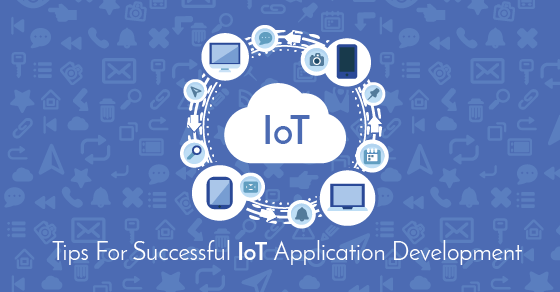"How Wearables Could Influence The Future of Mobile Applications"
"Odoo Editions Comparison Chart"

Internet of things (IoT) has proven to be a tremendous influence in driving the fortunes of businesses across the globe. However, the buzz IoT is set to change the very fabric of the world we live and work in. From kitchen appliances and coffee makers to security cameras and air quality sensors, every device or gadgets now holds the potential to spew valuable data by connecting to machines or systems.
There is no doubt that the present business landscape demands attainable digital experiences that connect customers with the company's products, brand and business tactics. The current hype in the business world is overrun with IoT product ideas to get the most value from connected devices. To get the real benefits of IoT, you need a plan to efficiently and effectively aggregate, store, and analyze all of the data. Here are three things to think about during the design and development of your IoT product.
In this aggressive shift to IoT companies are willing to lay the IoT groundwork in their respective industries in order to gain an advantage over their competition and become the first brand to successfully connect with customers. But still what stops most companies from diving into the IoT is their inability to identify a clear starting point. This often stems from a company's potential to adapt their development approach as they moving to crafting connected products.
The software can truly make you do anything you dream up. So, first of all, you require clarity over what you really in need of, which means the designed approach only can have the long life-cycle with the unforeseen changes in a market space. If you are carrying a mindset over IoT projects then you have to recognize this because one of the software's greatest benefits is agility. The software provides the ability to update products at any moment to meet new customer demands or to stay ahead of the competitions. By properly utilizing and staging software releases, companies can concentrate on designing for need, rather than project concerns.
As noted above, the connected software can achieve just about anything your project requires, but that doesn't mean it should. Research what you and your customers need. It is really that simple. Define what data is important, and what the best way to create a meaningful experience is.
Today's users expect a flawless recognition and intuitive functionality rather than too hard or dig too deep into your application to achieve their primary goals. Through a deep design research and wireframe navigation planning, it’s easy to recognize and deploy a minimally-viable feature set that is intuitive and meaningful. Execute with an impactful design and connected software to your application that will immediately resonate with your users.
Disjointed connected experiences leave users frustrated so IoT applications need to offer value above all, but they also need to create an emotional relationship between users and product while building brand loyalty. Physical products and their connected applications should work cohesively to create a unique experience that customers really expect for. If your IoT application improves and simplifies the lives of your consumer base, they will be loyal, and they will be longing for your next-generation offerings.